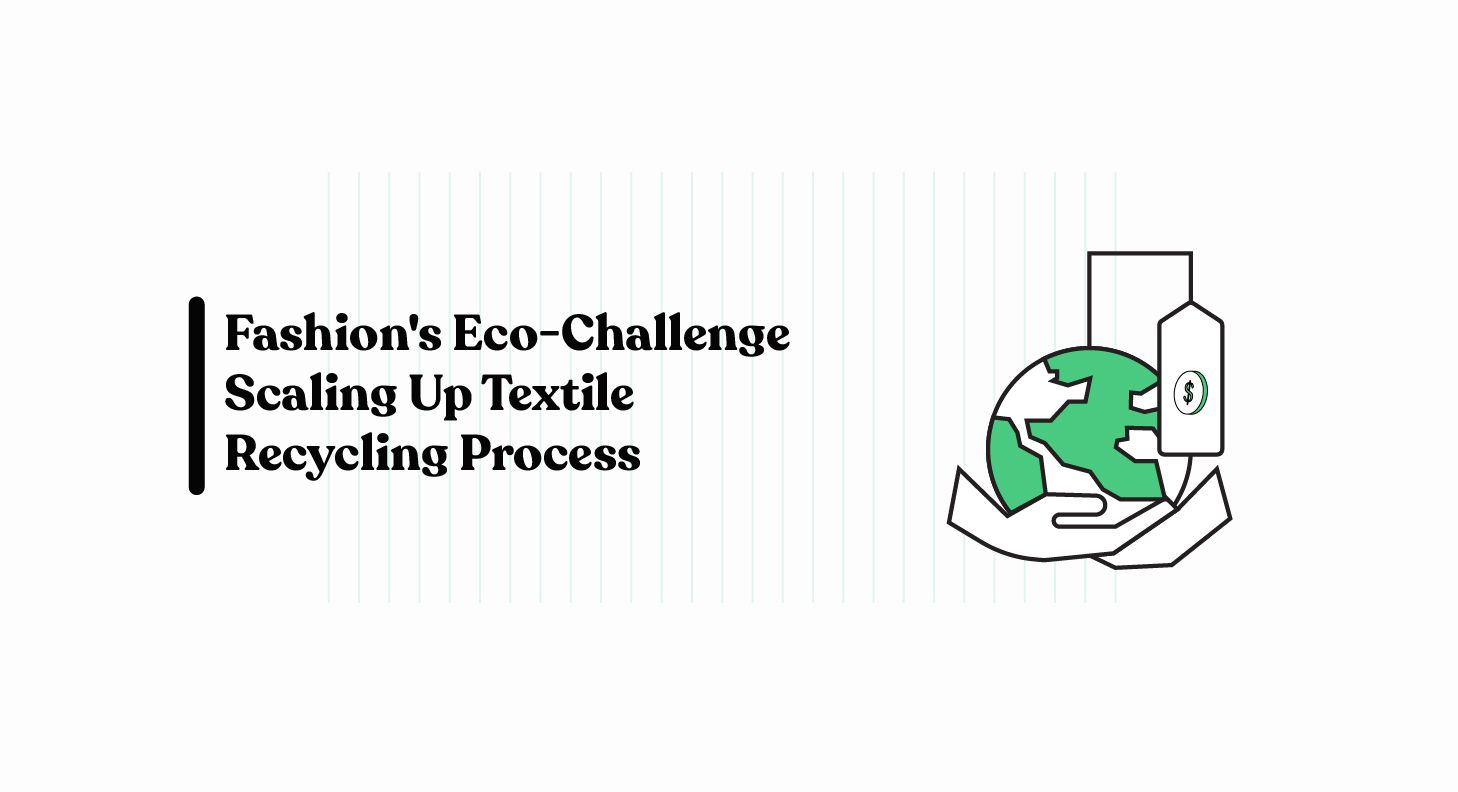Fashion's Eco-Challenge: Scaling The Textile Recycling Process
Millions of tonnes of clothing items are dumped or burned each year, contributing to a global crisis in waste management and pollution. While the promise of textile recycling appears to be a ray of hope, the fashion industry still grapples with a scale problem that must be urgently addressed.

The fashion industry is at a crossroads, teetering on the precipice of an environmental catastrophe. It's an industry synonymous with innovation, creativity, and reinvention. Yet, one of its greatest challenges lies in solving a problem that is, ironically, deeply rooted in its core – the unsustainable disposal of textiles.
Millions of tones of T-shirts, dresses, and other clothing items are dumped or burned each year, contributing to a global crisis in waste management and pollution. While the promise of textile recycling appears to be a ray of hope, the fashion industry still grapples with a scale problem that must be urgently addressed.
Fashion's Environmental Footprint
Before delving into solutions, it is crucial to grasp the magnitude of the problem. The fashion industry's impact on the environment is alarming:
- Wastewater and Carbon Emissions: According to the World Bank, the fashion industry is accountable for a staggering 20% of global wastewater and 10% of global carbon emissions.
- Low Recycling Rates: While the fashion industry produces a colossal 53 million tons of fiber annually, a mere 1% of it is recycled, resulting in less than 1% of clothing being repurposed into new garments.
- Landfills and Methane Emissions: Tragically, most discarded clothing finds its way to landfills or incinerators, where it releases methane, a potent greenhouse gas.
- Water Pollution: The fashion industry, following agriculture, is the second-largest contributor to water pollution globally, with a single cotton T-shirt production requiring a whopping 2,700 liters of water.
- Synthetic Fiber Decomposition: It's disheartening to note that when consumers dispose of clothing in landfills, these materials may take 200+ years to decompose, emphasizing the urgent need for sustainable textile disposal practices.
Challenges to Textile Recycling
Textile recycling is not without its hurdles:
- Complex Waste: Textile waste is complex and challenging to sort due to various materials and fabric blends.
- Fiber Blends: Many garments consist of a blend of different fibers, making them difficult to recycle.
- Lack of Infrastructure: There is a lack of infrastructure for textile recycling, hindering efficient processing.
- Cost Implications: Textile recycling can often be more expensive than producing new clothing from virgin materials, discouraging mass adoption.
However, there is hope on the horizon. The fashion industry is witnessing a burgeoning interest in textile recycling, with several companies and initiatives actively working to scale it up.
Promising Textile Recycling Initiatives
- Circularity Capital: A venture capital firm that invests in startups developing innovative technologies for textile recycling.
- Evrnu: This company has developed a groundbreaking process to recycle cotton into new cotton fiber, offering a sustainable alternative to traditional cotton production.
- Rethreaded: A social enterprise that repurposes and creates new products from recycled materials, including clothing, giving discarded textiles a new lease on life.
- H&M: A global clothing retailer with a take-back program for used clothing, promoting recycling and responsible disposal.
What's The Way Forward?
While these initiatives are commendable, they represent only a small fraction of the solution. To effectively tackle fashion's textile recycling problem, several measures are needed:
- Policy Action: Governments and regulatory bodies must set targets and regulations for textile recycling. The European Union's goal of recycling 65% of all textile waste by 2025 is a step in the right direction.
- Corporate Commitment: More fashion brands need to join the sustainability movement, following the example of Adidas, which has pledged to use 100% recycled materials in its products by 2024.
- Consumer Participation: Consumers also play a pivotal role in this journey. They can support textile recycling by buying fewer clothes and investing in high-quality, durable pieces that reduce the frequency of disposal. Donating used clothes to charities or take-back programs can give discarded garments a new life. Additionally, consciously choosing brands committed to sustainable practices, including textile recycling, can drive positive change.
In conclusion, textile recycling is a vital component of the fashion industry's journey towards sustainability and reduced environmental impact. Although challenges exist, there is an increasing awareness and commitment to finding solutions to fashion waste.
As these initiatives and technologies continue to evolve, and with the support of governments, corporations, and consumers, the fashion industry can hope to conquer its scale problem and bring about a revolution in textile recycling. The future of fashion lies not only in its creative designs but also in its commitment to preserving the planet for generations to come.
About Woven Insights
Woven Insights is a comprehensive market analytics solution that provides fashion brands with real-time access to retail market and consumer insights, sourced from over 70 million real shoppers and 20 million analyzed fashion products. Our platform helps brands track market trends, assess competitor performance, and refine product strategies with precision.
Woven Insights provides you with all the actionable data you need to create fashion products that are truly market-ready and consumer-aligned.
Click on the Book a demo button below to get started today.
